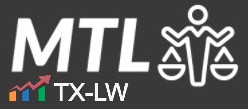Business owners with multiple entities often transfer funds between their companies. These transfers are often accounted for in an inter-company account. In other instances, they may be structured as loans.
When financial difficulties arise, these intercompany loans might be forgiven. If this is the case, can the borrowing entity exclude the forgiveness income while the lending entity claims a bad debt deduction–essentially creating a deduction without corresponding income? The result could be a significant tax deduction with no offsetting income recognition.
The Ninth Circuit’s decision in Kelly v. Commissioner, No. 23-70040 (9th Cir. Jun. 5, 2025) gets into this question involving related entities.
Contents
Facts & Procedural History
The taxpayer in this case was an individual. He controlled multiple business entities between 2007 and 2010. He transferred millions of dollars between the entities and characterized the transfers as loans to maintain flexibility in his business operations.
On December 31, 2010, the taxpayer cancelled many of the intercompany loans. The taxpayer reported $145 million of cancellation-of-debt (“COD”) income on his personal return, but excluded it entirely by claiming personal insolvency. Similarly, two of the entities reported COD income of $21 million and $2 million respectively but also excluded these amounts claiming insolvency.
The other side of it involved tax deductions. The taxpayer reported a short-term capital loss of nearly $87 million on his 2010 return, claiming a nonbusiness bad debt write-off for the cancelled loans.
The IRS conducted an audit and, after issuing deficiency notices, the taxpayer contested the adjustments in tax court. Following a nine-day trial, the tax court rejected the taxpayer’s worthless debt deduction theory while accepting most of his other positions. This resulted in income tax deficiencies of more than $5 million dollars for 2010 and $10,123 for 2011. The taxpayer appealed the worthless debt determination to the Ninth Circuit.
Section 166 and the Bad Debt Deduction Framework
Section 166 of the tax code allows taxpayers to deduct bad debts that become worthless during the tax year. This allows taxpayers who lend money and cannot collect tax relief for their economic loss. However, the tax deduction includes safeguards to prevent abuse, particularly in related-party situations.
To claim a nonbusiness bad debt deduction under Section 166, taxpayers have to satisfy three requirements. The debt must be bona fide, representing a genuine creditor-debtor relationship rather than a disguised gift or capital contribution. The taxpayer must have sufficient adjusted tax basis in the debt to support the claimed deduction amount. Most importantly for the Kelly case, the debt must have become “wholly worthless within the taxable year.”
Most disputes involving these rules focus on the worthless element. The requirement helps to ensure that tax loss deductions reflect genuine economic losses rather than paper transactions designed primarily for tax purposes.
The Objective Standard for Worthlessness
Courts apply an objective standard to determine whether debt has become worthless under Section 166. The debt must have zero value, not merely reduced value or partial collectibility. Even if only a modest fraction of the debt remains recoverable, the entire deduction is disallowed because the debt is not “wholly worthless.”
This objective test examines the debtor’s financial condition, available assets, and realistic collection prospects. Relevant factors include the debtor’s income potential, asset base, and whether legal action to collect would be entirely unsuccessful. The creditor’s subjective belief about worthlessness is insufficient–the determination must be based on verifiable facts about the debtor’s inability to pay.
The timing of worthlessness matters because the deduction is only available in the year the debt actually becomes worthless, not when the creditor decides to write it off for business reasons. This prevents taxpayers from timing deductions to optimize their tax benefits rather than reflecting actual economic losses.
Does Debt Discharge Equal Automatic Worthlessness?
The Ninth Circuit considered the question of whether debt cancellation automatically renders debt worthless for tax purposes. This was the argument raised by the taxpayer.
In considering the question, the court distinguished between “discharge” under Section 61(a)(11) and “worthlessness” under Section 166. The court explained that these terms serve different functions in the tax code and are not synonymous.
The court emphasized that discharge merely releases the debtor from the repayment obligation; worthlessness requires objective evidence that the debt has no value and cannot be collected. Simply cancelling debt does not eliminate its prior objective value as a matter of law. According to the court, the creditor must prove through facts and circumstances that the debt became uncollectible–not merely that the creditor chose to forgive it.
This distinction would preclude many taxpayers from getting a tax deduction through strategic debt forgiveness. In theory, without requiring objective proof of worthlessness, any monetary transfer could be structured as a loan and later cancelled to produce illegitimate tax benefits. The court noted that such abuse would be particularly problematic when parties are not dealing at arm’s length and the creditor stands to benefit from the cancellation.
The Takeaway
The Ninth Circuit’s decision in this case can been seen as a bar to circular tax planning strategies that attempt to create worthless debt deductions through strategic debt forgiveness to related entities. The decision reinforces that tax deductions must be grounded in genuine economic substance rather than paper transactions designed primarily to reduce tax liability. Intercompany debt strategies must involve real economic risks and losses, not circular arrangements designed to game the tax system.
Watch Our Free On-Demand Webinar
In 40 minutes, we'll teach you how to survive an IRS audit.
We'll explain how the IRS conducts audits and how to manage and close the audit.


